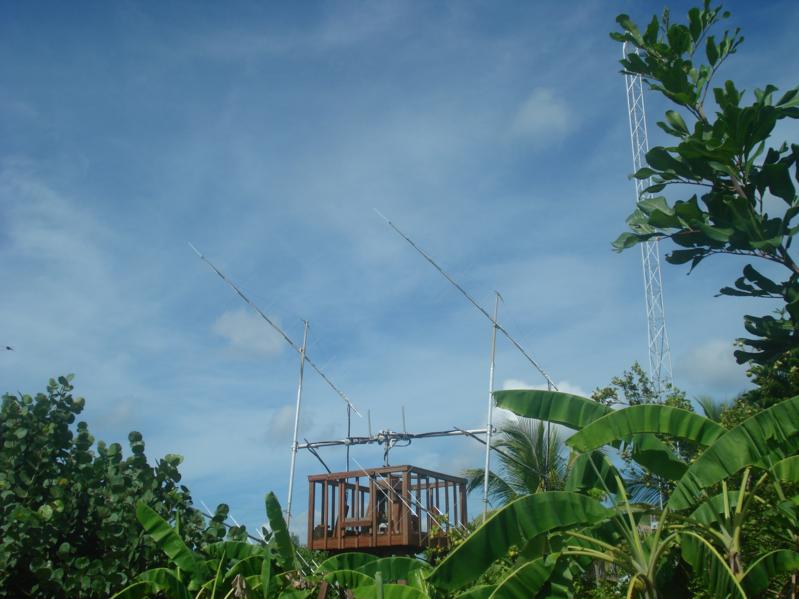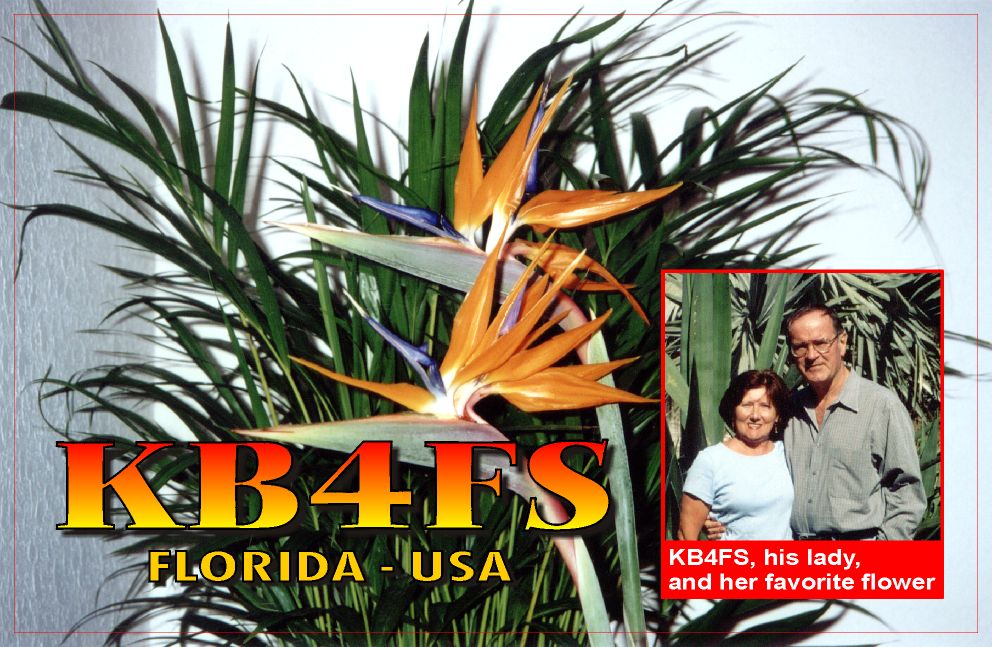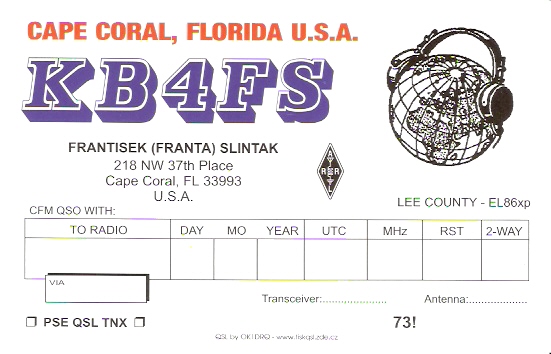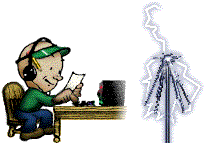
KB4FS webpage
That little guy on the left – that could be me. He keeps pounding on his old fashioned telegraph key as he is evidently sending a Morse code message to somebody whom he may never meet or to somebody who might be his good friend. Do you think nobody's doing things like that anymore these days? Well, I still do.
I am Frantisek (Franta, Francis, Frank) Slintak and I got hooked on all things electric and then electronic when I was about eleven years old. Did I mention I lived on a small farm in what was then Czechoslovakia? My first project was building a door bell or rather a door buzzer described in an old boy scout book. The instructions in the book called for two small brass metal components to be joined together so I went to see a local blacksmith to weld them together for me. Of cause he laughed at the idea but he also explained to me that I should rather solder the parts instead of him trying to weld them together. Eventually the buzzer did what it was supposed to do and from then on, for the rest of my life, I never stopped building similar projects ranging from simple crystal radios to complex synthesized receivers, transmitters, measuring instruments and even simple computers.
Later I realized that if I ever build a transmitter, I would have to know Morse code. That was a problem I had no clue how to resolve it. But I was lucky. My parents were listening to Voice of America on short wave and on the same wavelength a Russian transmitter was sending some strong Morse code messages in order to interfere with the American transmitter. It was a mess. My parents tried to follow the Voice of America and I was trying to write down the Russian code, which to no surprise they sent in a rather high speed (later I clocked the speed at an astonishing 20 words per minute). And at the beginning it was hopeless. At that speed I wrote down maybe one letter in one minute but after about two years of stubborn persistence I could show a one hundred percent correct copy of what the Russians transmitted over the Voice of America. Lesson learned here is: Don't you ever try to learn Morse code this way!
In 1958 I obtained my first ham radio license, OK2AEI, and that meant I joined a fraternity of friends dedicated to a hobby of electronics, radio and communication. And good friends they are, I can tell! At one point of my life in 1968, right after Russians invaded Czechoslovakia, I decided I no longer wanted to live there. Life anywhere in a free world would be better then life in a communist Czechoslovakia. There were four of us who made up the Slintak family then and it was virtually impossible to leave the country without government permission. You could go to a foreign country as a tourist but only if somebody from that country would sponsor your trip and provide for you because you could not take any money with you out of Czechoslovakia. You could not exchange Czech money into foreign currency anyway.
I tried to solve the dilemma this way. As a ham radio operator I already made a few contacts with Austrian hams and I had in my possession their cards that we had exchanged after we made contact. So I wrote letters to two of them openly asking them to sponsor me and my family the way I described above and I also wrote “. . . please write me a letter of your sponsorship because I want to leave my country permanently. I will ask for political asylum in Austria and in the process you will never see me and you will never spend a single shilling on my expenses in Austria”. Letters of sponsorship from both hams came back within one week, I was able to obtain permission for my trip, and about two weeks later my family left the country. And in another couple of months we all came to America. Now you can understand what I meant when, in my opening statement, I wrote “. . . who might be his good friend”. I am a living example (or a witness) of that friendship and I am eternally grateful for what those two Austrians hams did for me.
In America
Four of us came to America: My wife, my son Martin, my daughter Veronika, myself, and soon after our arrival our son Peter was born. After my wife divorced me I married Nancy (Anička) and with her I got a stepson Rene.
By profession, I am a mechanical engineer and electronics is my hobby. But to be involved in this hobby the way I am doing it, it also means I could never stop learning about all things electronic to an extent that I think I know more about my hobby than about my profession. I already said the ham radio is a hobby of electronics, radio, and communication. Being able to communicate using my radio I made thousands of contacts and met so many friends, but what really interest me most is the technical aspect of the hobby. I spent many more hours building and testing things than operating my radios. Here in America I worked almost the entire time for Ford Motor Company, first as a test engineer and then on their staff. Now I am retired and living in Florida. I also like to take canoe trips to explore Cape Coral's coastal mangroves, I like to take trips all over the world with Anička on cruise ships (sorry, too old to take an individual trip to Australia on my own again). And I have to mention here the sailboat Beruska that Anička and me completed in Toledo Beach Marina and then we sailed her on the Great Lakes (you must see my WebPage link to Beruska). And of corse I love my grandchildren Julia, Kristofer, Sabrina, Calista, Maurine, Max Frantisek and Ryan and their Mothers Tracy and Jennifer. By the way, I love to cook too.
Both sides of a KB4FS card (click on an image to enlarge)
(When hams - The Amateur Radio Aficionados - communicate using Morse code, often they use abbreviations like "73", which means they greet each other.)
73 from Franta, KB4FS
A few pictures concerning my ham radio activities are shown below (click on an image to open the gallery):

There are two antennas shown in this picture. A 40 ft. aluminum mast supports a short wave wire antenna.
A quad crossed polarized Yagi antenna system is installed on a 20 ft. wood tower.
Back to the Entry Page




Back to the Entry Page




